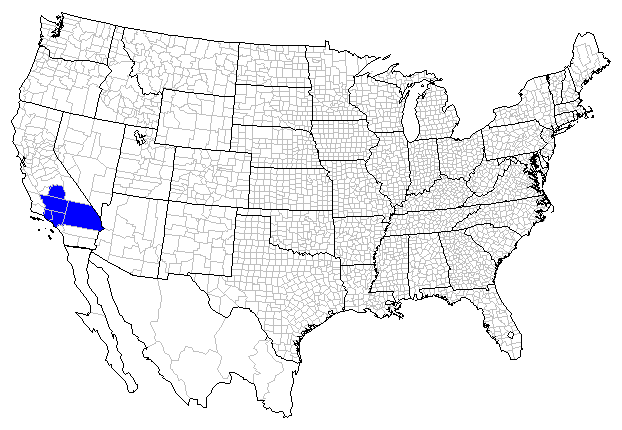 |
 

 |


Veined Blue (Plebeius neurona [Skinner])
Wing span: 3/4 - 7/8 inch (2 - 2.2 cm).
Identification: Has no blue color. Upperside dark brown with orange veins and submarginal bands. Underside white with black spot pattern and red-orange submarginal bands.
Life history: Eggs are laid singly on leaves of host plant, which caterpillars eat. Second-stage caterpillars hibernate.
Flight: One or two broods from May-August.
Caterpillar hosts: Wright's buckwheat (Eriogonum wrightii) in the buckwheat family.
Adult food: Flower nectar.
Habitat: Rocky outcrops, hills, and ridges in the mountains.
Range: Very local in southern California: Walker Pass, Kern County, Tehachapi Mountains, mountains of San Bernardino County.
Conservation: All populations are of conservation concern.
The Nature Conservancy Global Rank: G3 - Very rare or local throughout its range or found locally in a restricted range (21 to 100 occurrences). (Threatened throughout its range).
Management needs: Monitor populations and study the effects of
fire, grazing, and exotic weeds.
References:
Scott, J. A. 1986. The butterflies of North America. Stanford University Press,
Stanford, Calif. 583 pages, 64 color plates.
Tilden, J. W. 1986. A field guide to western butterflies. Houghton-Mifflin Co.,
Boston, Mass. 370 pages, 23 color plates.
Author: Jane M. Struttmann

